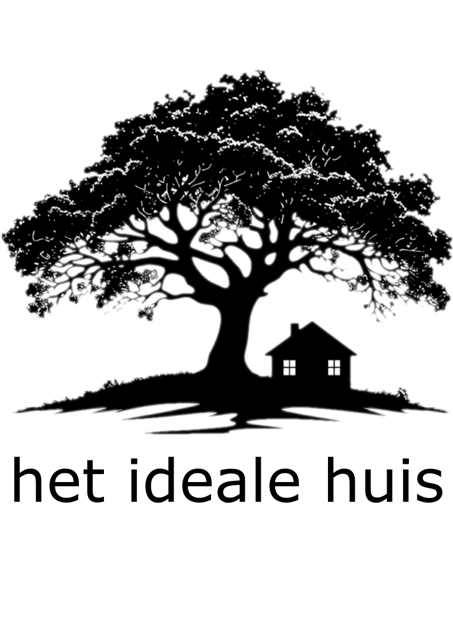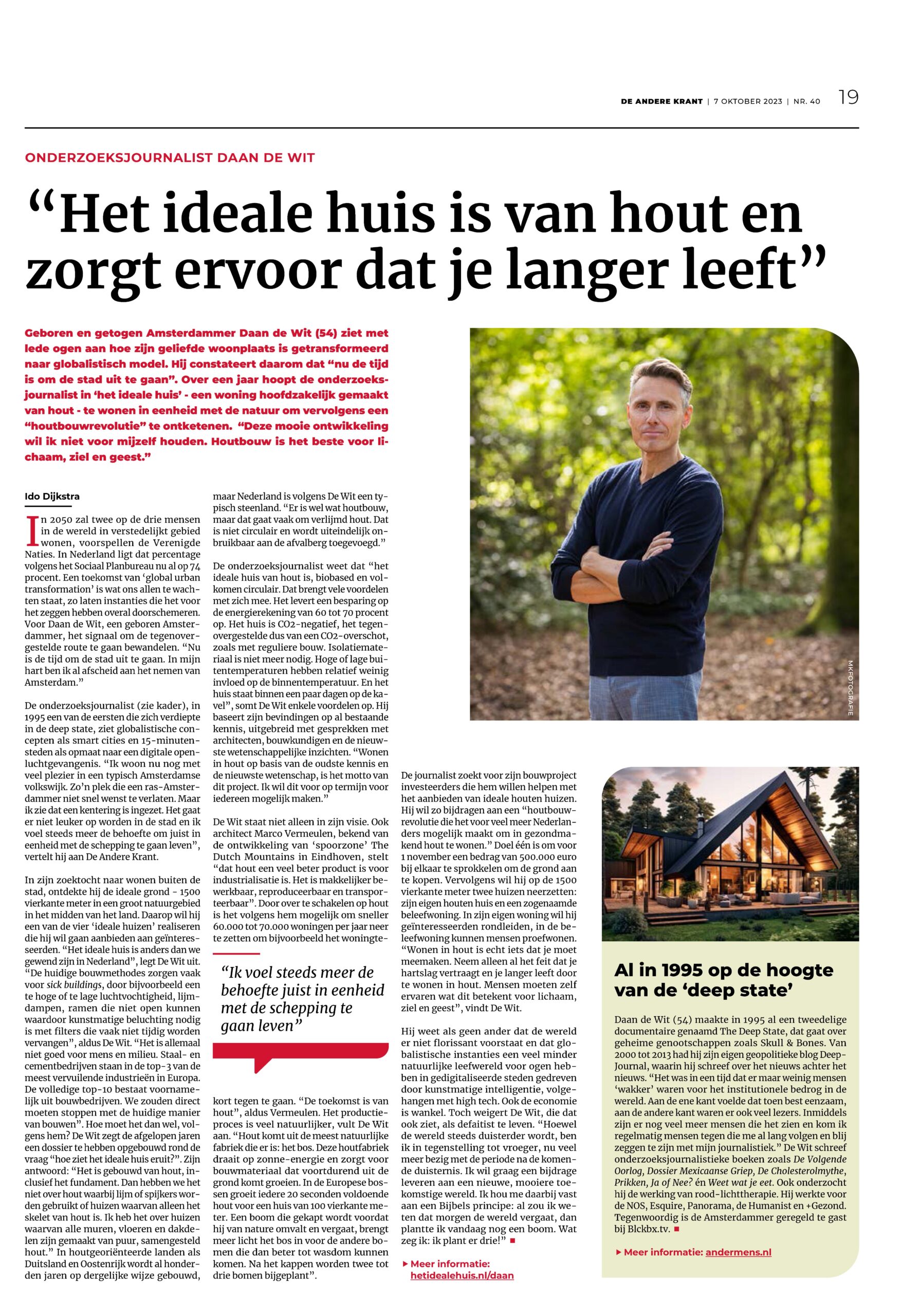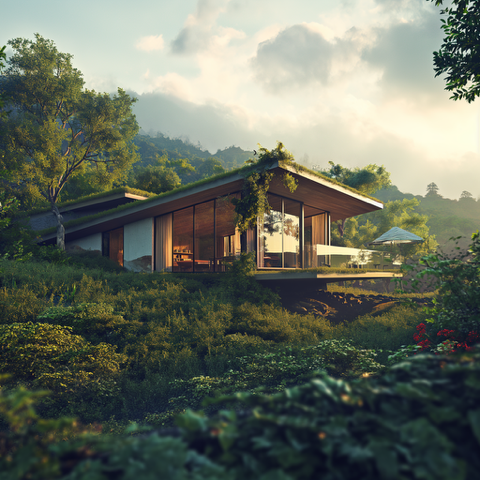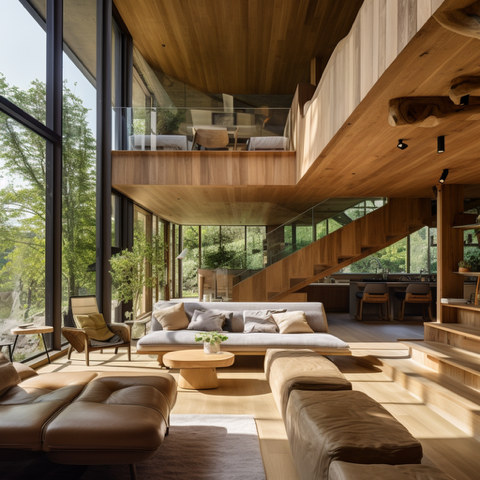Daan de Wit interviewed by De Andere Krant
Investigative journalist Daan de Wit
"The ideal house is made of wood and makes you live longer’
By Ido Dijkstra
Born and raised in Amsterdam, Daan de Wit (54) looks with dismay at how his beloved hometown has become involved in a so-called urban transformation process to a globalist model. He therefore notes that”now is the time to go out of town". In a year, the investigative journalist hopes to live in’ the ideal house ' – a house mainly made of wood – in unity with nature and then unleash a “wood-building revolution”. “This is such a beautiful discovery, I don't want to keep it to myself. Wood construction is best for Body, Soul and spirit. It makes you live longer.”
By 2050, two out of three people in the world will live in urbanized areas, the United Nations predicts. In the Netherlands, according to the Social Planning Bureau, that percentage is already 74 percent. A future of ‘global urban transformation’ is what awaits us all, as agencies in charge of it hint everywhere. For Daan de Wit, a native of Amsterdam, the signal to take the opposite route. "Now is the time to go out of town. In my heart I am already saying goodbye to Amsterdam."The investigative journalist (see box), in 1995 one of the first to delve into the deep state and make a documentary about it, sees globalist concepts such as smart cities and 15-minute cities as a prelude to a digital open-air prison. “I still live with great pleasure in a typical Amsterdam neighborhood. Such a place that a breed Amsterdammer does not want to leave soon. But I see that a turnaround has been initiated. It's not going to be more fun in the city and I feel more and more the need to live in unity with creation,” he tells the other newspaper.
In his search for living outside the city, he discovered not only the ideal house, but also the ideal land – 1500 square meters in a large nature reserve in the middle of the country. On it, he wants to realize one of the four ideal houses that he is going to offer. "The ideal house is very different from what we are used to in the Netherlands, explains De Wit. "Current construction methods often cause sick buildings, for example due to too high or too low humidity, glue vapors, windows that cannot open, which means that artificial ventilation is necessary with filters that are often not replaced in a timely manner,” says De Wit. "It's not good for people or the environment. Steel and cement companies are in the Top-3 of the most polluting industries in Europe. And the full top-10? It consists mainly of construction companies. We should immediately stop the current way of building".
How should it be, according to him? De Wit says that in recent years he has built a dossier around the question “What does the ideal house look like?”. His answer: "it is built of wood, including the foundation. Then we are not talking about Wood where glue or nails are used or houses whose only skeleton is made of wood. I'm talking about houses where all the walls, floors and roof sections are made of pure, composite wood."In wood-oriented countries such as Germany and Austria, roughly speaking, this has been built for hundreds of years, but the Netherlands, according to de Wit, is a typical Stone Country. "There is some wood construction, but that often involves glued wood. That is not circular and is eventually added to the waste pile in an unusable way.”
The investigative journalist knows that”the ideal house is made of wood, biobased and completely circular". That brings many advantages. “It results in savings on the energy bill of 60 to 70 percent. The house is CO2-negative, the opposite of a CO2 surplus, as with regular construction. Insulation material is no longer needed. High or low outside temperatures have relatively little effect on the inside temperature. And the House will be on the lot in a few days,” De Wit lists some advantages. He bases his findings on already existing knowledge, expanded with conversations with architects, structural engineers and the latest scientific insights. "Living in wood based on the oldest knowledge and the latest science, is the motto of this project. I want to make this possible for everyone.’
The White is not alone in his vision. Also architect Marco Vermeulen, known for the development of the Dutch Mountains railway zone in Eindhoven, states “that Wood is a much better product for industrialization. It is more easily editable, reproducible and transportable”. According to him, by switching to wood, it is possible to build 60,000 to 70,000 houses a year faster in order to counteract the housing shortage, for example. ” The future is made of Wood, " says Vermeulen. The production process is much more natural, according to de Wit. "Wood comes from the most natural plant there is, the forest. This wood factory runs on solar energy and provides building material that is constantly growing out of the ground. In the European forests, enough wood grows every 20 seconds for a house of 100 square meters. A tree that is cut down before it naturally falls over and decays brings more light into the forest for the other trees that can then grow better. After felling, two to three trees are replanted”.
The journalist is looking for investors for his construction project who want to help him realize his mission: to offer ideal wooden houses. De Wit wants to contribute to a wood-building revolution so that it becomes possible for many Dutch people to live in healthy wood.” The first goal is to raise an amount of 500,000 euros by november 1 to buy the land. He then wants to build two houses on the 1500 square meters: his own wooden house and a so-called courtesy house. In his own home he wants to show interested parties around, in the experience home people can live for a trial. "Living in Wood is really something you have to experience. Just take the fact that your heart rate slows down and you live longer by living in wood. People have to experience for themselves what this means for Body, Soul and spirit,” he says.
Of course, De Wit knows better than anyone that the world is not thriving and that globalist institutions envisage a much less natural world for people in digitized cities driven by artificial intelligence, full of high tech. The economy can also be called at least shaky. Yet De Wit, who certainly sees this, refuses to live as a defeatist. "Although the world is getting darker, unlike before, I am less concerned with the dark side. I am already working on the period after the coming darkness. I would like to contribute to a new, more beautiful future world. I adhere to a Biblical principle: even if I knew that tomorrow the world would end, I would plant a tree today. What am I saying, I'm planting three!”
More information: https://hetidealehuis.nl/daan/
**FRAMEWORK**
In 1995, the " deep state’
Daan de Wit (54) already made a two-part documentary in 1995 called The Deep State, which is about secret societies such as Skull & Bones. From 2000 to 2013, he had his own geopolitical blog DeepJournal, in which he wrote about the news behind the news. “It was at a time when few people were’ awake ' to the institutional deception in the world. On the one hand that felt quite lonely at the time, on the other hand there were also many readers. Now there are many more people who see it and I regularly come across people who have been following me for a long time and say that they are happy with my journalism."De Wit wrote investigative journalism books such as The Next War, The Swine Flu case, the Cholesterol Myth and Pricks, yes or no? and Know what you eat and investigated the effect of red light therapy. He worked for the NOS, Esquire, Panorama, The Humanist and +Gezond. Nowadays, the Amsterdammer is a regular guest at Blckbx.tv
More information: https://andermens.nl
- 7 October 2023 –



